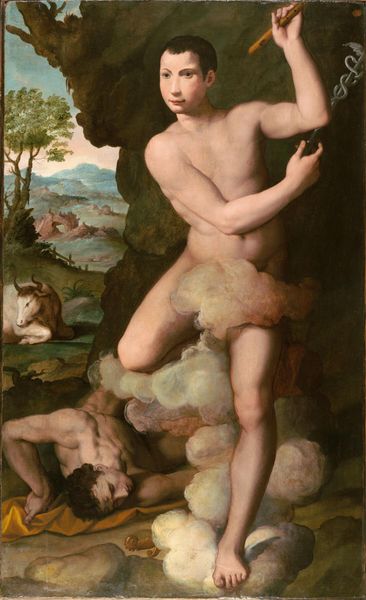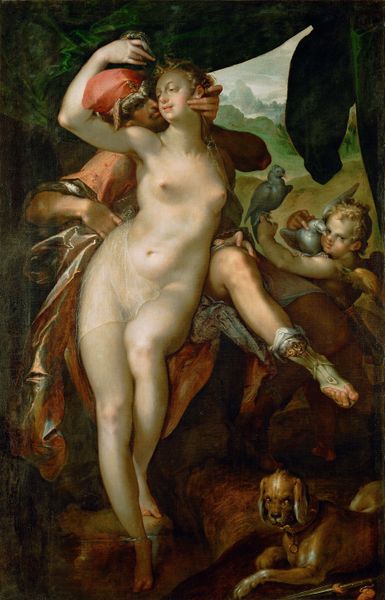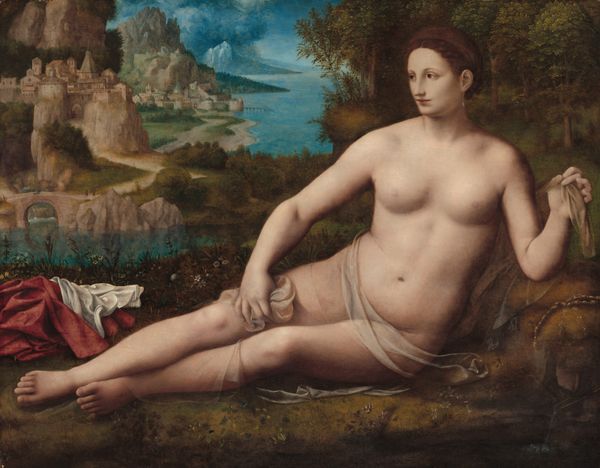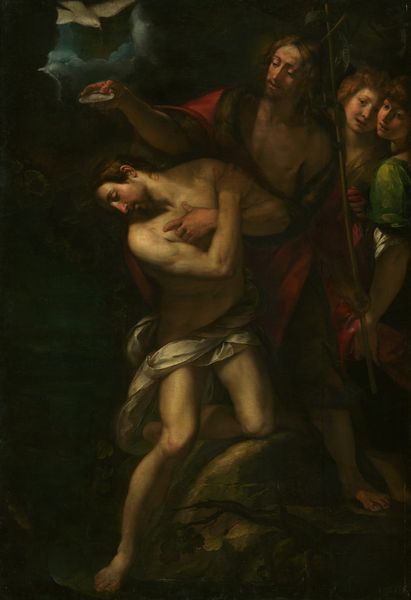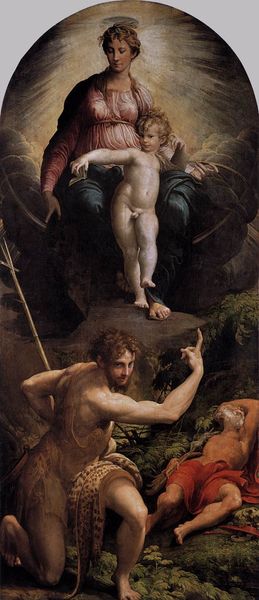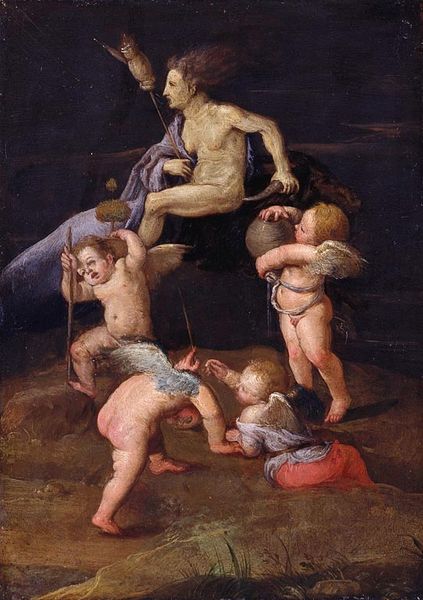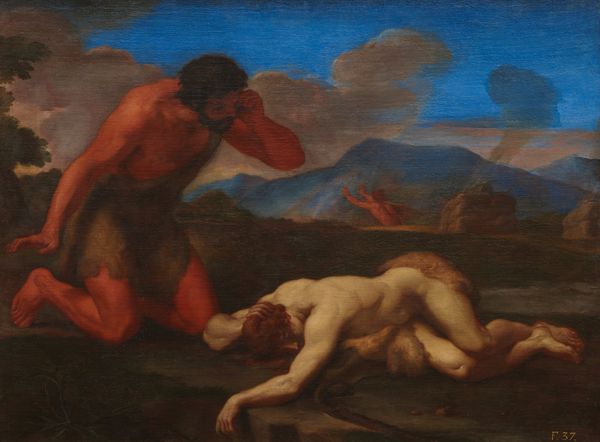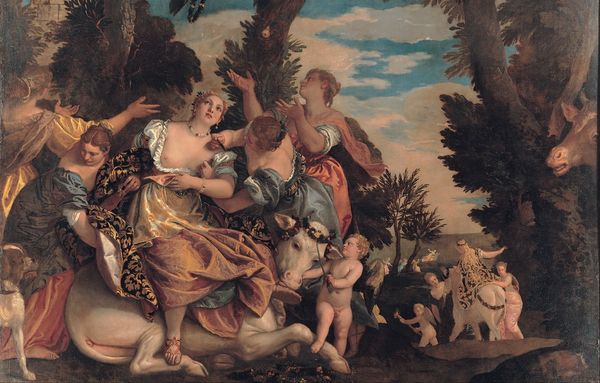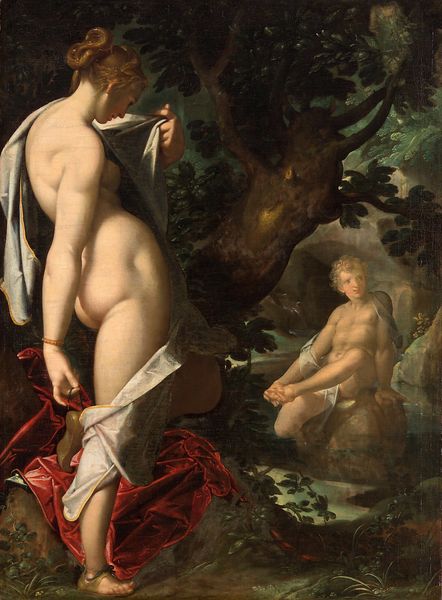
oil-paint
#
portrait
#
oil-paint
#
figuration
#
oil painting
#
female-nude
#
history-painting
#
italian-renaissance
#
nude
#
male-nude
Dimensions: 15 3/4 x 9 1/4 in. (40 x 23.5 cm)
Copyright: Public Domain
Editor: Here we have Bachiacca’s oil painting from the 1520s, "Eve with Cain and Abel.” I find it striking how he represents this very famous scene with such soft, almost dreamy rendering. What aspects of this piece particularly resonate with you? Curator: I am fascinated by the materiality of the piece, by what its making reveals. Think of the canvas itself, stretched and primed, a product of workshops and trade. Consider the pigments, sourced and ground, their cost and availability shaping the artist’s palette. These aren't simply aesthetic choices, but reflect the economic realities of artistic production in Renaissance Italy. Editor: That's a different perspective than I've considered before. Does that economic angle change our understanding of the nude figures? Curator: Absolutely. Nudity here isn’t simply about aesthetic beauty, but about the labor involved in portraying flesh. How does the artist's access to models, and their training, affect his rendering of the human form? It’s not just skill; it is work! Furthermore, the act of depiction itself becomes a form of consumption, appropriating the body for artistic purposes. Do you see how the blue drapery and the setting relate in that respect? Editor: I see. The way he treats the fabric seems less idealized and more like just a material present in the space with Eve and the children. Curator: Precisely. And that landscape, too, isn’t just a backdrop but a constructed space shaped by economic forces—agriculture, land ownership, the availability of materials for buildings, the food to feed families and workshops. The painting thus transforms into a kind of material inventory of its time. Editor: So by looking at the actual stuff the painting is made of, and the economy around it, we gain a much broader insight into the art and its social setting? Curator: Exactly! The painting then is no longer simply a depiction, but evidence of a system of production and consumption that permeates all aspects of life, even a representation of the biblical Eve. Editor: That’s really shifted how I’ll look at Renaissance paintings. Thank you!
Comments
No comments
Be the first to comment and join the conversation on the ultimate creative platform.
